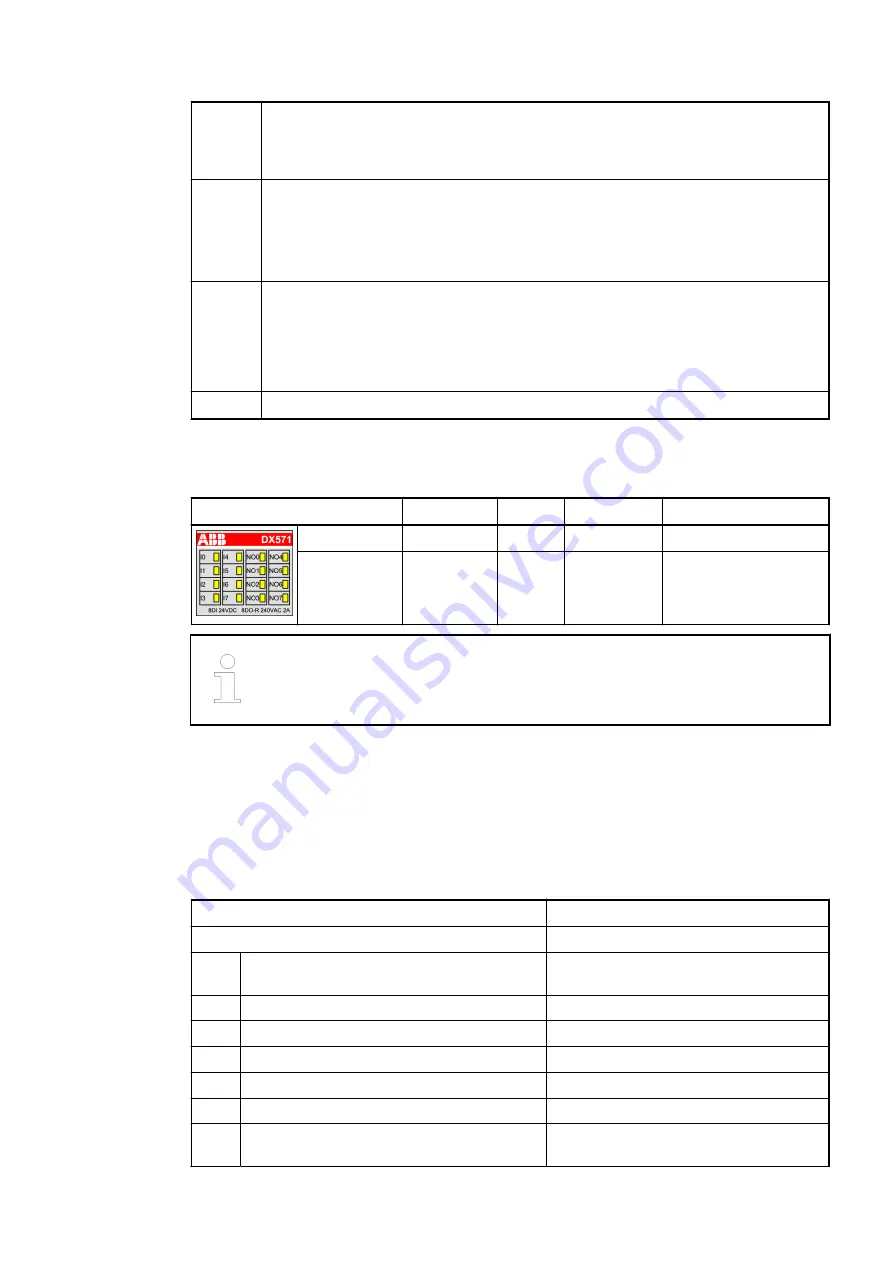
1
)
In AC500 the following interface identifier applies:
14 = I/O bus, 11 = COM1 (e.g. CS31 bus), 12 = COM2.
The PNIO diagnosis block does not contain this identifier.
2
)
With "Device" the following allocation applies:
31 = Module itself,
1...10 = decentralized communication interface module 1...10,
ADR = hardware address (e. g. of the DC551-CS31)
3
)
With "Module" the following allocation applies depending on the master:
Module error: I/O bus or PNIO: 31 = Module itself; COM1/COM2: 1...10 = expansion
1...10
Channel error: I/O bus or PNIO = Module type (2 = DO); COM1/COM2: 1...10 =
expansion 1...10
4
)
In case of module errors, with channel "31 = module itself" is output.
State LEDs
LED
State
Color
LED = OFF
LED = ON
Inputs I0...I7
Digital input Yellow
Input is OFF Input is ON
Outputs
NO0...NO7
Digital output Yellow
Output is
OFF
Output is ON
In the undefined signal range, the state LED for the inputs can be ON although
the input state detected by the module is OFF.
Technical data
The System Data of AC500-eCo apply
Chapter 2.5.1 “System data AC500-eCo V3”
Only additional details are therefore documented below.
Parameter
Value
Process supply voltage L+
Connections
Terminal 20 for L+ (+24 V DC). The neg-
ative pole is provided by the I/O bus.
Rated value
24 V DC
Current consumption via L+
50 mA
Inrush current (at power-up)
0.0035 A
²
s
Max. ripple
5 %
Protection against reversed voltage
Yes
Rated protection fuse for L+
Recommended; the outputs must be pro-
tected by a 3 A fast-acting fuse
Device specifications
I/O modules > Digital I/O modules
2022/01/31
3ADR010278, 3, en_US
265
















































